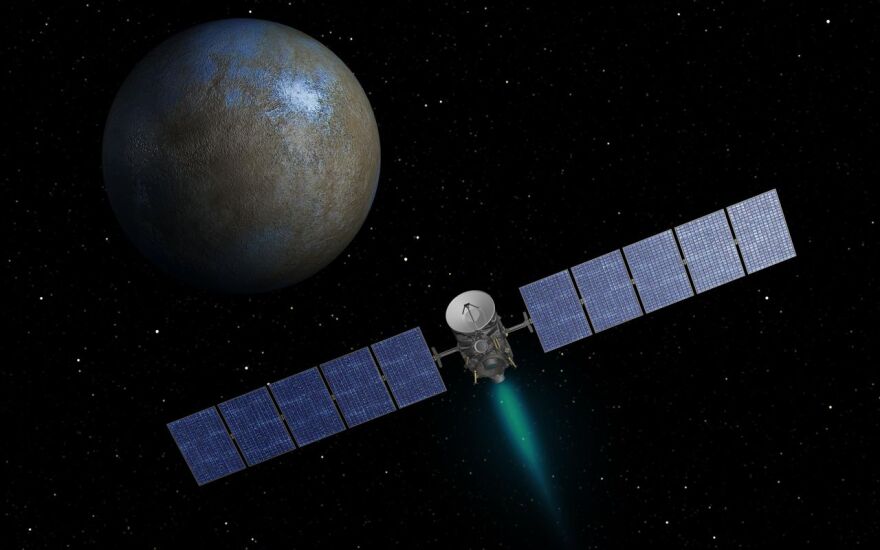Truth matters. Community matters. Your support makes both possible. LAist is one of the few places where news remains independent and free from political and corporate influence. Stand up for truth and for LAist. Make your year-end tax-deductible gift now.
This archival content was originally written for and published on KPCC.org. Keep in mind that links and images may no longer work — and references may be outdated.
JPL's Dawn spacecraft approaches mysterious dwarf planet Ceres

JPL's Dawn probe is now a mere 400,000 miles (640,000 kilometers) from its final destination: a dwarf planet named Ceres that orbits in the asteroid belt between Mars and Jupiter.
Once there, the spacecraft will study this icy rock which may have sub-surface oceans of liquid water.
Ceres is a classified as dwarf planet because it still has space debris in its orbit indicating it never coalesced into a full planet.
Still, it can teach us a lot about how places like Earth formed in the early days of our solar system.
(This video shows an animation of Dawn reaching Ceres.)
"It’s a big place. It’s a whole alien world," said JPL's Marc Rayman, Dawn's mission director and chief engineer.
Spread out, Ceres’ total square mileage would cover near 40% of the continental United States.
Dawn will use a suite of tools to examine both the topography and the core of Ceres. As of now, relatively little is known about this object even though it is the largest body in the asteroid belt.
The fact that Ceres is roughly one-third water is one of the many reasons it is an exciting place to study, Rayman says.
"This is a world of ice and rock," he told KPCC. "It’s possible that it even has subsurface ponds or lakes or maybe even oceans of liquid water deep under the surface."
Some scientists believe that those oceans could harbor life, though currently there is no evidence to support that theory.
Rayman admits it is possible but he says it's very unlikely.
"I'm in the wait-and-see camp," he said.
Ceres is a space rock that represents the early stages of planetary development, Rayman said.
Had Jupiter not formed near by, disrupting the area of the Asteroid Belt with its immense gravitational force, Ceres may have continued to collect mass and become a planet as well.
Rayman says the dwarf planet can teach us a lot about the composition of the early solar system and how smaller celestial bodies grow into larger ones.
Traveling at about 450 miles per hour, the Dawn spacecraft is scheduled to reach Ceres in March, capping off an eight-year long journey.
The $466 million probe studied the proto-planet Vesta in 2011. It's the first NASA space craft to orbit two different unexplored worlds.
It's been able to make the journey in large part thanks to the ion propulsion system it uses, explained in the video below.
Rayman says an ion propulsion system is 10 times more efficient than a traditional chemical based one, allowing the probe to do many more maneuvers over its lifetime.
However, after reaching Ceres, the Dawn spacecraft will wander no more.
"Dawn is going to stay in orbit around Ceres effectively indefinitely."
JPL says the spacecraft should reach Ceres on March 6.







